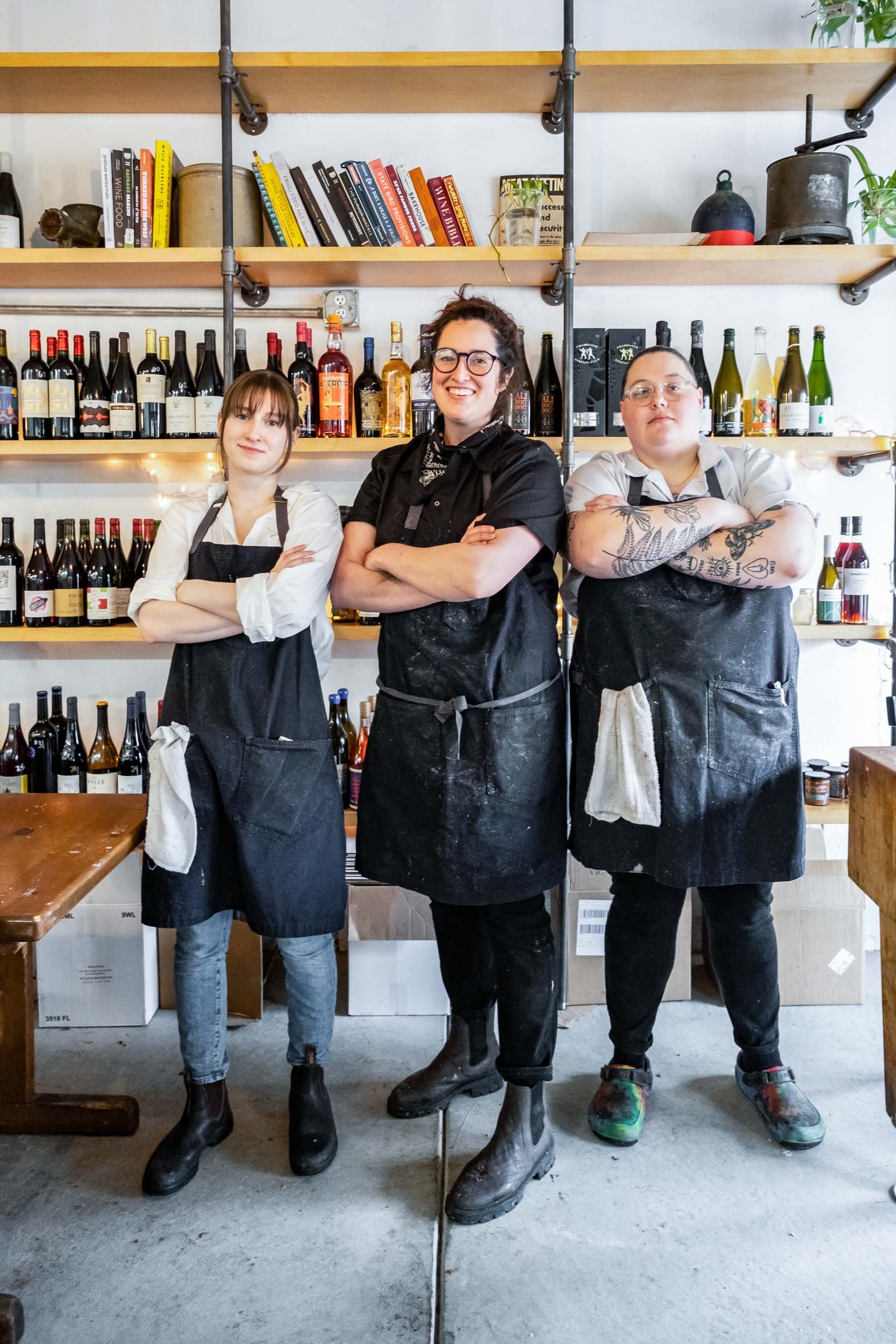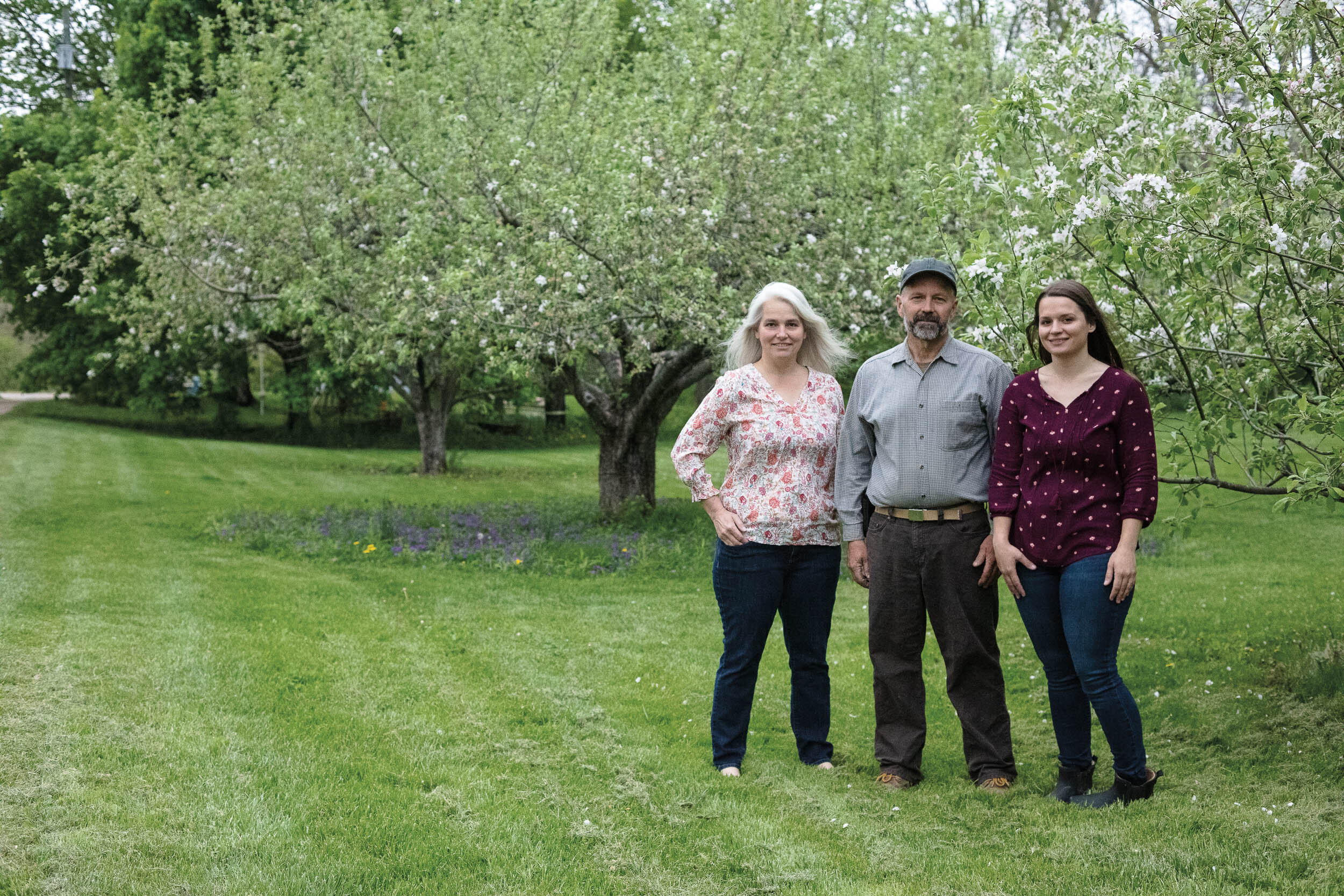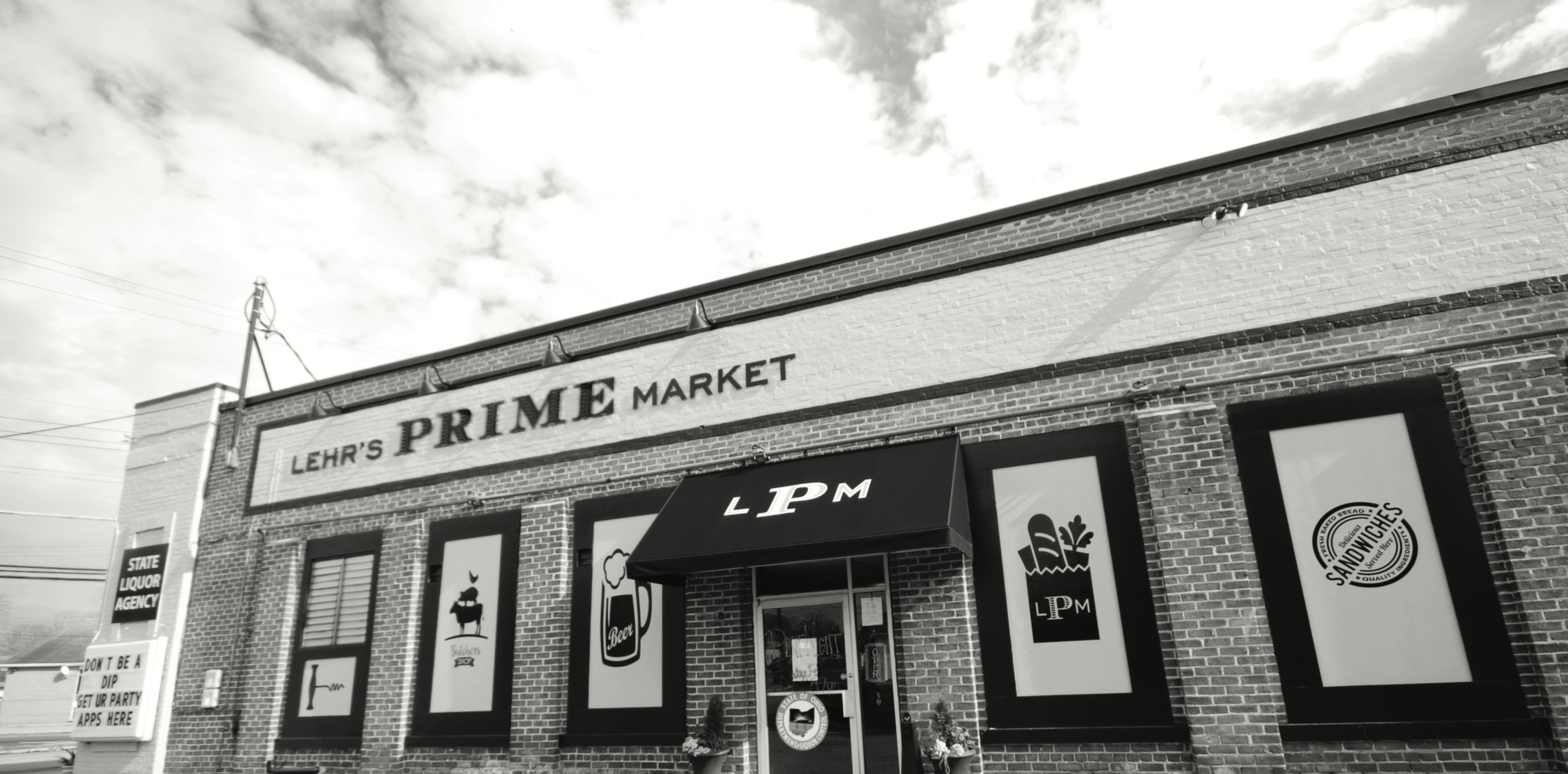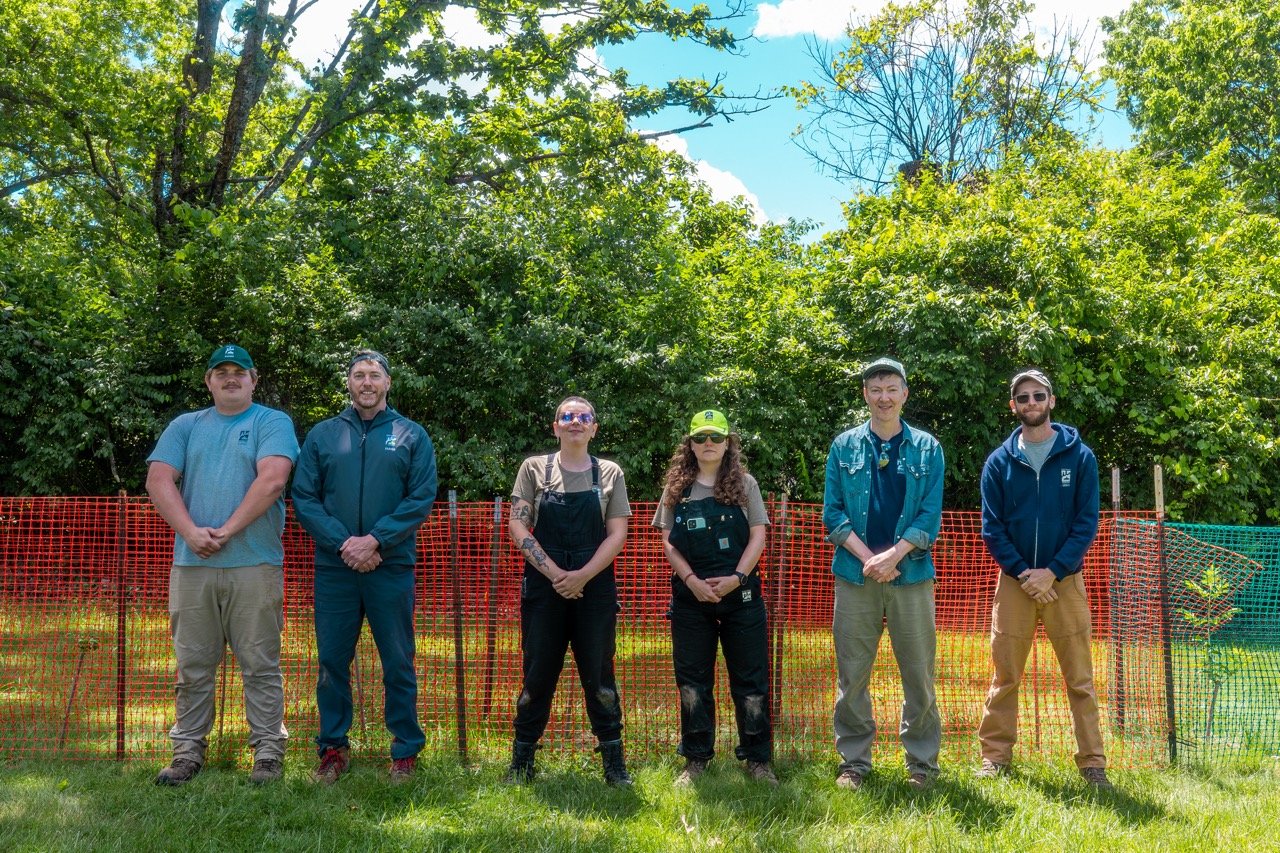Meat-o-nomics (Part II)
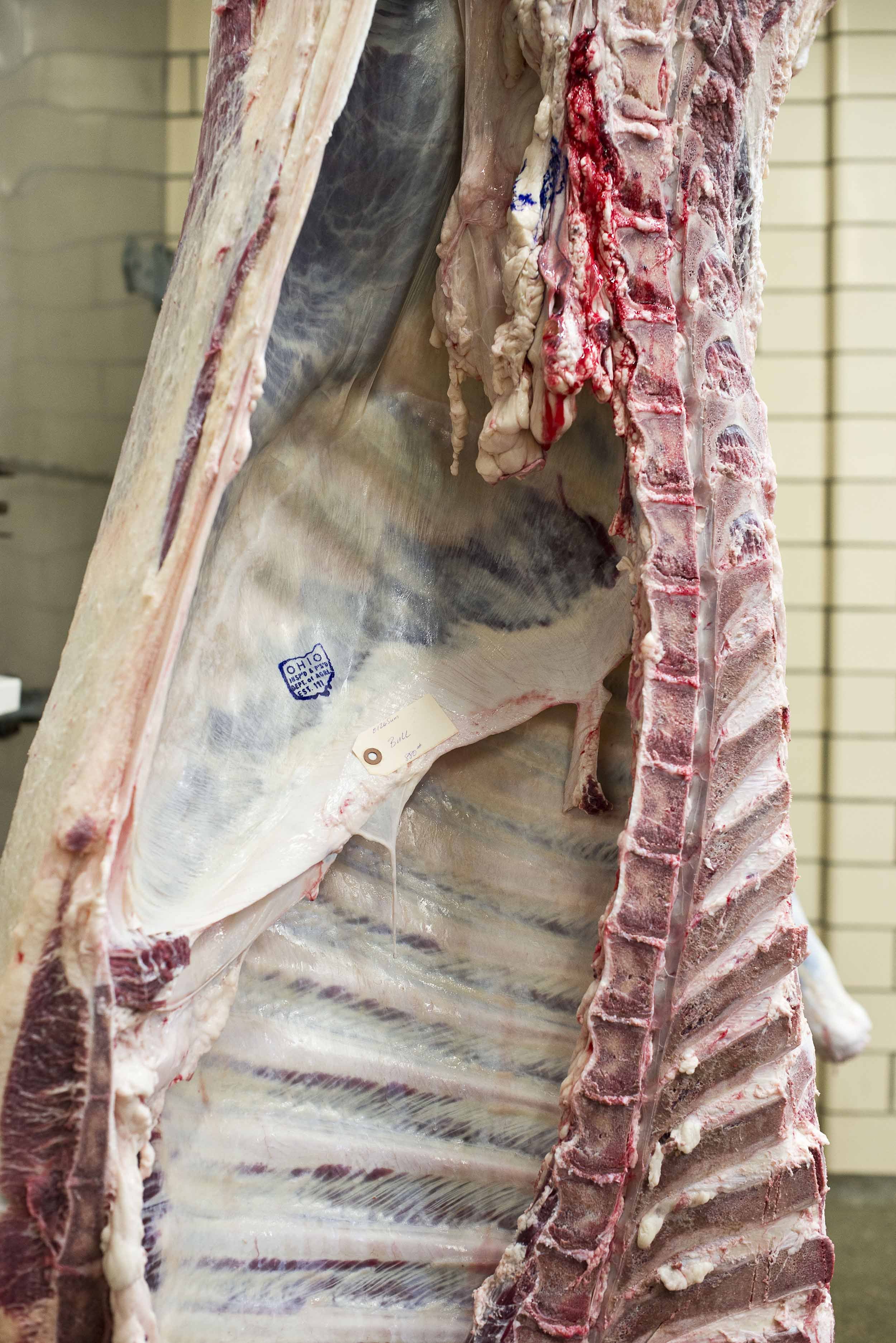
In Part I, we looked at the intense financial challenges faced by small Ohio Valley meat producers. Here, we dig into another obstacle—a scarcity of meat processors—to understand why local meat is more costly (yet more beneficial) than dollar-a-pound commodity ground beef.
by Cedric Rose
Our farm had such a good relationship with our processor that we could grow and take whatever we needed, whenever we needed it, and they were able to accommodate us,” says livestock farmer Drausin Wulsin of Grassroots Farm & Foods in Pike County, OH.
That was before the pandemic.
“That changed overnight,” Wulsin says. “Suddenly we had to lay out a plan that was two years long as to when we were going to take our hogs in. And those animals hadn’t even been born.”
With regard to meat slaughter and processing, the pandemic turned the dynamic between Big Meat and small livestock farmers on its head. As Wulsin understands it, empty meat cases at supermarkets sent many Americans to smaller butchers where they bought up the locally raised meat they usually dismissed in favor of cheaper, mass-produced cuts they’d find at the grocery store.
And just as consumers pivoted to local meat over commodity cuts, Covid-19 caused labor disruptions at the packing houses that serve the big national producers. This meant the big producers diverted animals to smaller processors just as demand for local meat surged.
The crush on small processors was tied to the pandemic. But the pressure points in the flow of meat from field to table are not new. Consolidation in the meat industry has been happening for decades.
Four big companies hold a collective 53 percent share of the meat processing industry. With just over 50 plants responsible for 98 percent of slaughtering and processing across the country, the industry is both unfavorable to small farmers and extremely vulnerable to disruptions.
Take the 2021 Memorial Day weekend ransomware attack on the U.S. division of JBS, the world’s largest meat company. (Based in Brazil, it owns the former leading U.S. meat-packing companies Swift, Smithfield, and Pilgrim’s Pride.) That incident set off a chain reaction that drove up wholesale meat prices, backed up animals in barns, and forced food distributors to search for new suppliers.
Unlike some farms during the pandemic, Grassroots Farm didn’t have to euthanize any animals due to lack of processing capacity. But like so many, they’re left with ongoing stress and uncertainty. The spike in demand hasn’t, Wulsin says, held up. “We’re almost back to normal, almost back to what it was. You know, human nature reacts to fight and flight, I guess. So when they get worried about the lack of supply in stores, they come to people like us. Once the stores become convenient again, they resume their patterns of old.”
Yet even as consolidation and other factors—including an aging workforce—have eaten away at the options available to small livestock producers, demand for local meat has steadily grown. A 2014 review of 19 reports by the Center for Regional Food Systems found that people across economic and social backgrounds were willing to pay a premium for sustainable, healthy, pasture-raised meat. That’s a positive development, as is a growing awareness of the need to shore up the limited options for slaughter, processing, and cold storage that stand in the way of the growth of local meat.
Processing: The Local Meat Bottleneck
As we saw in the first part of this series, federal loan guarantees have been made available to build new processors, such as Stockyards Packing Company, slated to open this year in Oxford, OH. But is that enough?
Sure, there’s consensus that small producers are essential to food system stability, environmental health, and subtle-but-vital connections among nutrition, cultural life, and landscape. The quandary is that for small farmers to survive and actually flourish, they desperately need processors suited to their scale. But for those types of processing businesses to work—and their startup costs are in the millions of dollars—they need reliable sources of business.
“There’s a movement afoot to build a big processor out here in Highland County that would require 200 head of beef a week to supply it,” Wulsin says. “But where are those animals going to come from? Who’s going to raise them? It’s not an easy thing to raise grass-fed beef.”
In addition to being extremely hard work, meat processing takes skilled leadership to manage the facility. “So I have some pause about creating lots of new places even though in this crisis we need them,” he says. “There is discussion about mobile processing units, and I think that that has some virtue.”
Mobile processing units are truck-based facilities that can slaughter animals and process them on farms or at temporary regional hubs. They include equipment for processing animals, heating water for sanitization, and refrigeration. Their potential use here in Ohio to help small farmers strapped for processing options is the subject of research by Ohio State University Program Coordinator Angela Blatt, regenerative agriculture advocate and author Paul Dorrance, and Columbus-based homesteader and sustainable agriculture advisor Rachel Tayse.
The trio have partnered with Ohio farmers and the Appalachian Center for Economic Networks (ACEnet) to assess the feasibility of mobile slaughter and processing for small-scale farmers in Ohio and Central Appalachia. Their work opens a window into the processing bottleneck issue from multiple angles.
I spoke with Dorrance and Tayse by phone and learned about their work through an Ohio Food Policy Network-hosted webinar on their findings titled, appropriately enough, “Where’s the Beef? Current Needs, Creative Solutions, and Cooperative Opportunities in Regional Red Meat Processing.”
Bringing the Processor to the Farm
In his tall Stetson, Dorrance, a former farmer, looks the part of the cattleman. This project started, he says, with the question, “Why doesn’t Ohio have mobile slaughter as a possible solution to an acknowledged bottleneck?”
Dorrance says the group was told repeatedly by “a multitude of folks who should know, that you cannot do mobile slaughter in Ohio. You just can’t. It’s not allowed.”
Turns out that, actually, yes you can. This they learned from District 7 Meat Inspection Supervisor Dave Smeller. There’s nothing that says you can’t, so long as it’s inspected by the Ohio Department of Agriculture or USDA.
Dorrance speaks softly and with military precision. In addition to sporting that tall ten-gallon, he wears the hat of an Air Force Reserve pilot. As we talk about Ohio farmers, I envision him seeing the Ohio Valley from high above, this softly pleated patchwork of greens and browns. This landscape is the source of some of the best, most ethical meat you can buy. And it could support much more.
Dorrance’s commitment both to farmers and their animals runs deep. A big part of what brought him to the project is the relative humaneness in mobile processing. “There’s this weighty imperative to treat my animals well,” he says. “To raise them, yes, for meat … but that doesn’t mean we should mistreat them. The process of taking an animal that’s very, very comfortable in my environment here on the farm, then running it through noisy chutes to an unfamiliar place, and then at that point—even if I can do all of that perfectly—to turn over my hard work to somebody else. You can envision this terrifying environment for an animal. For me, the most compelling piece of this idea was what if I can eliminate all of that? If I can have that animal look me in the eye, and in their comfortable, regular routine place, end their life right there? And then let the meat do the rest of that travel.”
For the floridly tattooed homesteader and self-described “soil creative” Rachel Tayse, investigating the potential for mobile processing in Ohio fits with her life’s work of supporting local food systems, born in farmers’ markets. Among those market stalls she developed friendships with regional growers and livestock farmers. This brought awareness of big problems in the system. She wondered: “What are the small shifts that could make it more viable for more folks to be farmers and have access to good clean meat?”
As a vegetarian turned conscientious meat eater, Tayse sees the value of livestock in terms of our environment and agricultural production. Having raised animals for food and done DIY butchering, she understands the difficulty of the work.
Booking processing time 18 to 24 months in advance just doesn’t work with the inherent variability in pasture-raised meat, she says. “If the summer was a drought and there wasn’t a lot of pasture, or if it flooded in the spring and they couldn’t get animals out in time, the animals are not going to be at the weight that’s ideal. So by August the farmer is faced with this terrible decision,” she says. “Do I keep raising this animal until it gets to weight and hope or scramble to find some way to slaughter it so that I can sell it? Or do I slaughter it but lose this amount of weight—and therefore my profit?”
The bottleneck affects what small-scale ranchers are able to produce and often forces them to leave money on the table, Tayse continues, because overbooked processors can’t offer the products that farmers know their consumers want. For instance, she says, she’s been talking to a producer in the Cincinnati area, a small but well-funded livestock operation that knows their customers very well: “They have the marketing, they have the customer base, and their customer base wants no-additive sausages, bacon, and other prepared meat.” But the only processor that can provide those products is meaningfully farther away from the farm.
So again we see a tough choice based on the logistical challenge of getting animals to a processor at the right time. For small producers, unlike vertically integrated large-scale meat operations, every small calculation includes reallocation of resources that can make the difference between profit or loss.
Mobile slaughter and processing has the potential to make the local meat market more palatable for producers, and it’s also appealing to a consumer base increasingly interested in ethical treatment of animals. But if you want to look at this from a raw economic perspective, Dorrance says, “for every hour that an animal is transported, they lose 1 percent of their weight. So if they’re taking a six hour drive, that’s 6 percent of your weight of your animal that you’re going to lose. This is just generally accepted as a non-negotiable cost of doing business. But does it have to be? Mobile challenges that assumption.”
Mobile slaughter and processing aren’t, to be clear, a panacea to the region’s local meat needs. Blatt, Tayse, and Dorrance are the first to acknowledge this. They have many of the logistical issues that brick-and-mortar processing plants face: waste management, sanitization, and the need for some kind of cattle handling infrastructure. It doesn’t solve the labor issue. But it might make the job more attractive to some.
Working conditions in this model contrast sharply with those of static facilities. For example, the trio visited the newest and oldest working mobile slaughtering facilities in the country, both located on the West Coast, where mobile processing workers told them that the connection with farmers meant something to them. The inspector job for mobile processing was a sought-after position, Tayse says.
When you consider the relatively low startup cost—about $250,000 for a mobile slaughter and processing rig compared to millions for bricks and mortar—and that the former can be reused, relocated, and sold, mobile processing becomes attractive as a test or transitory solution to fill in while production grows to the point where it can attract investment in permanent facilities. You begin to see how in Ohio, mobile meat processing could supplement small, geographically distant producers, serving as a step toward construction of sustainable slaughterhouses and processing facilities.
This isn’t to paint too rosy a picture. I watched videos. Out there in the green fields, under a blue sky, there are flies. Processors work very quickly. The physicality sticks with you. Men push blades through the red of muscle, the white of fat, bone, and connective tissue. There’s the wet snap of sinew and gristle. But there’s a dignity to a job that would make many of us squeamish. There’s an honesty. It’s primordial, vital. It seems right under an open sky, rather than hidden away, out of sight and mind.
Something Dorrance told me comes to mind: “If I can look the animal in the eye …”
Ample Questions, and Hope
As I watch the trio’s webinar, I come to the now-familiar point at the end where the presenters test whether their audience is still with them. The pregnant pause of a floor opened to questions.
“We have this saying in the military,” Dorrance says, “for when you’re listening in, but in the back of your head you’re thinking, ‘yeah, but …?’ We call that sharpening the spears. So while we’ve been talking, you’ve probably been sharpening your spears, formulating those questions.”
There are questions about funding, about what might be available to whom. For one participant, the question is where mobile processing fits into the existing ecosystem of processors able to break down sides into those desirable, marketable cuts.
My own spear sharpening harks back to Wulsin’s point that consumers are essentially lazy, that we’re creatures of habit. Faced with a shortage, we’re willing to explore other options, pay the extra buck. But what happens when supply returns to normal? Are we willing to walk an extra mile so someone else doesn’t have to?
“These regenerative farms are a form of artwork,” Wulsin says. “Wendell Berry says the best fertilizer is the farmer’s footsteps. Regenerative farms are all about footsteps. They’re not about economies of scale. And that’s the challenge: Footsteps are expensive. Those are people. They’re not machines. And you have to pay people well enough. So it’s a struggle to get to an economy of scale where all the people are being well paid and the customer is satisfied. The biggest challenge is we’re competing with industrial food, and apparently being compared to that.”
If there’s a bright side, Wulsin says, it’s that more people are aware of the importance of locally grown and raised food, including animal protein. It seems to me that’s the first step in progress. That collective understanding builds the will required to bolster a young economy until it becomes self-supporting. We need to commit to local food and keep our promises..
If regenerative farming is all about footsteps, then protecting the land, the people, and their food is all about choices—small decisions, billions of them, strung together. Given enough good decisions, the landscape stands a chance. The softly undulating fields of Ohio, viewed from high above, will be a soft, green pasture, speckled with kine.
More stories about local meat production
Ever since his grandfather put him to work squashing potato bugs and shoveling compost in a vast organic garden north of Philadelphia, Cedric has loved the outdoors. These days, he squashes bugs for his green-thumbed partner, Jen. His writing has appeared in Saveur, Cincinnati, This Old House, and Belt magazines. He is the Collector at the Mercantile Library Downtown.

